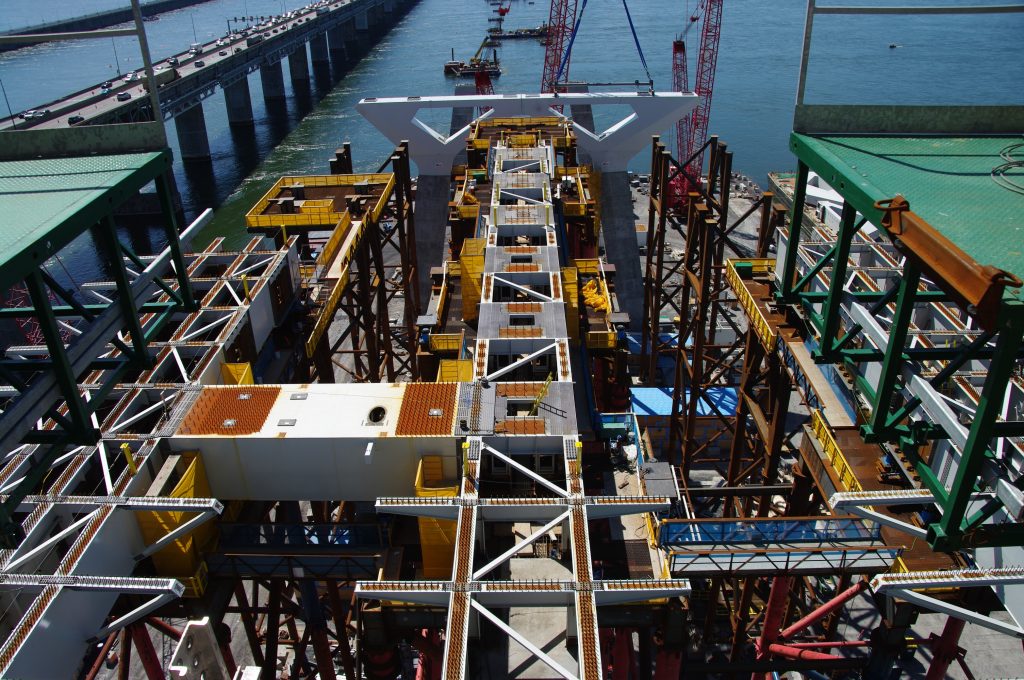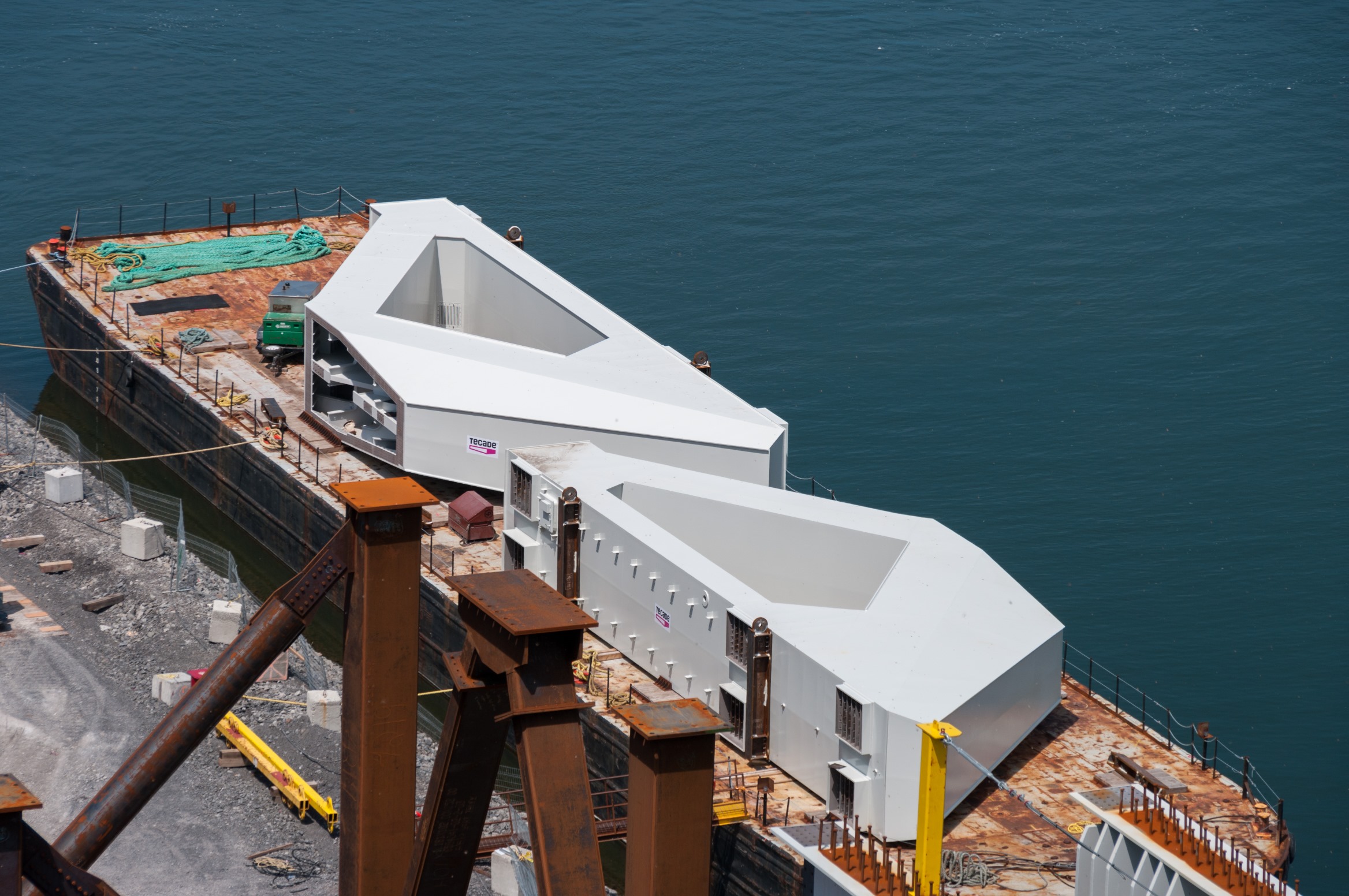The pier caps are colossal, W-shaped lateral steel girders on which the traffic decks will rest. The cap was put in place in two pieces over a period of several days, earlier this month. Lifting each half-cap is a complex operation, as operation leader for structural steelwork on the cable-stayed bridge, Pierre Velghe, explains: “This is not a standard tandem lift, as we have seen on other parts of the project.

This operation calls for two 650t cranes. We have to pick up a 261t piece, with all the equipment, horizontally and then rotate it to the vertical so it can be installed. This is actually the first time the piece is placed upright, since pier caps are built, stored and shipped entirely horizontally.”

Field engineer for the cable-stayed bridge Scott McDonach adds, “Our team faces two principal challenges with the pier caps. It is essential that we put up the transition pieces, juxtaposing the piers within the approved tolerances and giving us a solid base to install the pier caps. We then need to make the connection in the centre of the pier cap with pinpoint accuracy, if the piece is to be solid and properly fulfill its function.”

Area manager Frédéric Guitard, says: “The final installation of these structures, to the nearest millimetre, is the result of rigorous and precise preparation, coordination and execution work carried out for over a year jointly by our team of engineers, surveyors, and workers from all disciplines.” The pier cap is a crucial structural element that ensures the support of the superstructure and bridge deck, and distributes the loads between the two piers. In all, 37 caps will be put in place over the coming months.
A consortium of SNC-Lavalin, Dragados Canada, Flatiron Constructors Canada and EBC is building the crossing on behalf of the Signature on the Saint Lawrence group, which is responsible for the design, construction, financing, operation and maintenance of the new bridge. Detailed design is by SNC Lavalin, TY Lin International and International Bridge Technologies.




